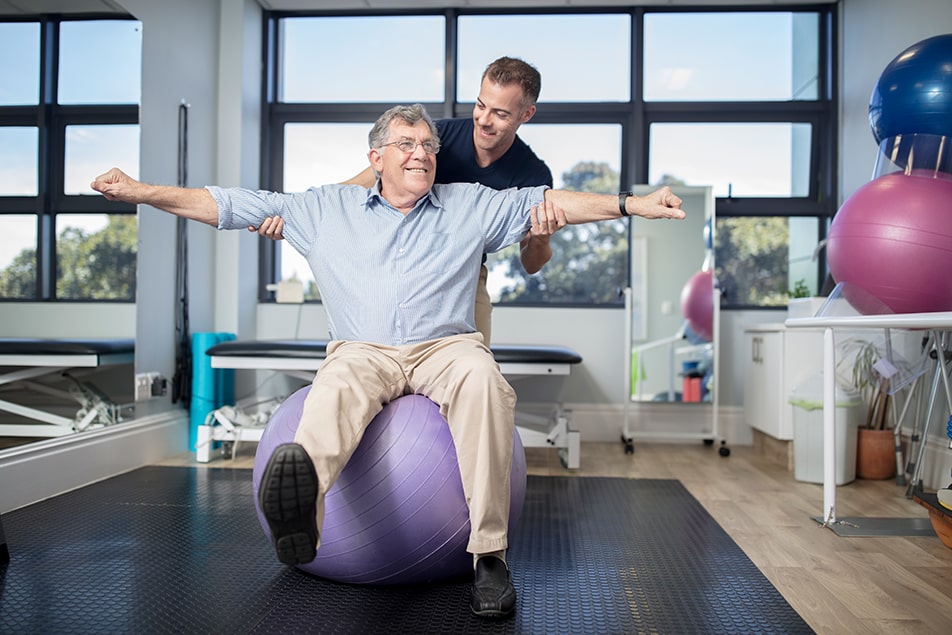You are experiencing some problems with your balance or equilibrium. Do not be afraid of your dizziness. With the help of expert vestibular therapy advice, only you can build up the tolerance in your brain to overcome your dizziness. Vestibular rehabilitation exercises help with muscle strength and flexibility, reduced joint stiffness, and increased stamina.
What are the signs that you need vestibular Therapy?
Some of the clear indications for vestibular rehabilitation referrals:
- Clients suffering from benign paroxysmal positional vertigo (BPPV)
- One-sided loss, such as for vestibular neuritis or acoustic neuroma
- Dual-sided loss, such as for gentamicin toxicity and related conditions
- General situations where the diagnosis is unclear
- Post-traumatic vertigo
- Multifactorial disequilibrium of the elderly
What are the vestibular rehabilitation exercises?
Vestibular exercises aim to improve the brain’s compensation mechanism for injuries or peculiarities. It results in the normal neural signal flow throughout the body.
Following are the exercise techniques:
Cawthorne-Cooksey Exercises for dizziness
The vestibular rehabilitation therapy includes the following exercises:
- Eye and head movement in bed or sitting position
- Moving the Eye movements—Up and down, From side to side, finger focusing technique
- Head movements—Flexing forwards and backward, moving from side to side
- Shrug and circle shoulders
- Move forward and pick up objects from the ground
- Move side to side and pick up objects from the ground
- Eye, head and shoulder movement in the standing position
- Changing from a sitting to a standing position with eyes open, then closed
- Throwing an object from hand to hand above eye level
- Tossing an object from hand to hand under the knee
- Changing from a sitting to a standing position, turning around in between
- Walking exercises
- Walking up and down a slope
- Walking up and down steps
- Throwing and catch an object
- Any game that involves kneeling, stretching and aiming (for example, bowling)
Gaze stabilization rehabilitation therapy
The vestibular rehabilitation therapy improves vision and the capacity to focus on a stationary object while the head is on the move.
Our vestibular physiotherapist will assess your case and say which exercises are suitable for you.
Below are the steps for gaze stabilization vestibular rehabilitation exercises:
- Glazing straight ahead and focusing on an English alphabet held at eye level
- Practicing focus on the target letter and building up the movement speed while turning your head horizontally.
- Doing the exercise for a considerable length of time that brings on mild to moderate symptoms. Building up gradually to repeat three to five times a day.
- Progressions with the therapy include placing the target letter on a busy background.
Repositioning procedures (RPs) for benign paroxysmal positional vertigo (BPPV)
Repositioning procedures involve a sequence of specific head and upper body movements that may be able to move the crystals, which is the cause of dizziness back to their correct place in the ear.
Brandt-Daroff exercises for vertigo
Some cases of BPPV do not respond well to RPs and are better handled by Brandt-Daroff exercise therapy or vestibular compensation.
The vestibular exercise therapy involves exposure to movements that provoke dizziness symptoms, and teaches your brain not to listen to the signals it is receiving from the ears as much.
Below are the common positions but may include variations for Brandt-Daroff exercises:
- Sitting on the edge of the bed and turning the head 45 degrees to one side.
- Quickly lying down on your opposite side (to the left if you turned your head to the right, and vice versa) so that the back of your head behind your ear touches the bed.
- Holding on to this position for about 30 seconds or until the dizziness symptoms stop.
- Returning to the sitting position.
Conclusion
Many times, vestibular rehabilitation therapy is likely to be the only treatment required. Other times, it is a part of other therapies such as presurgery/postsurgery treatment plan. Let’s get in touch to understand more about your specific requirements.


